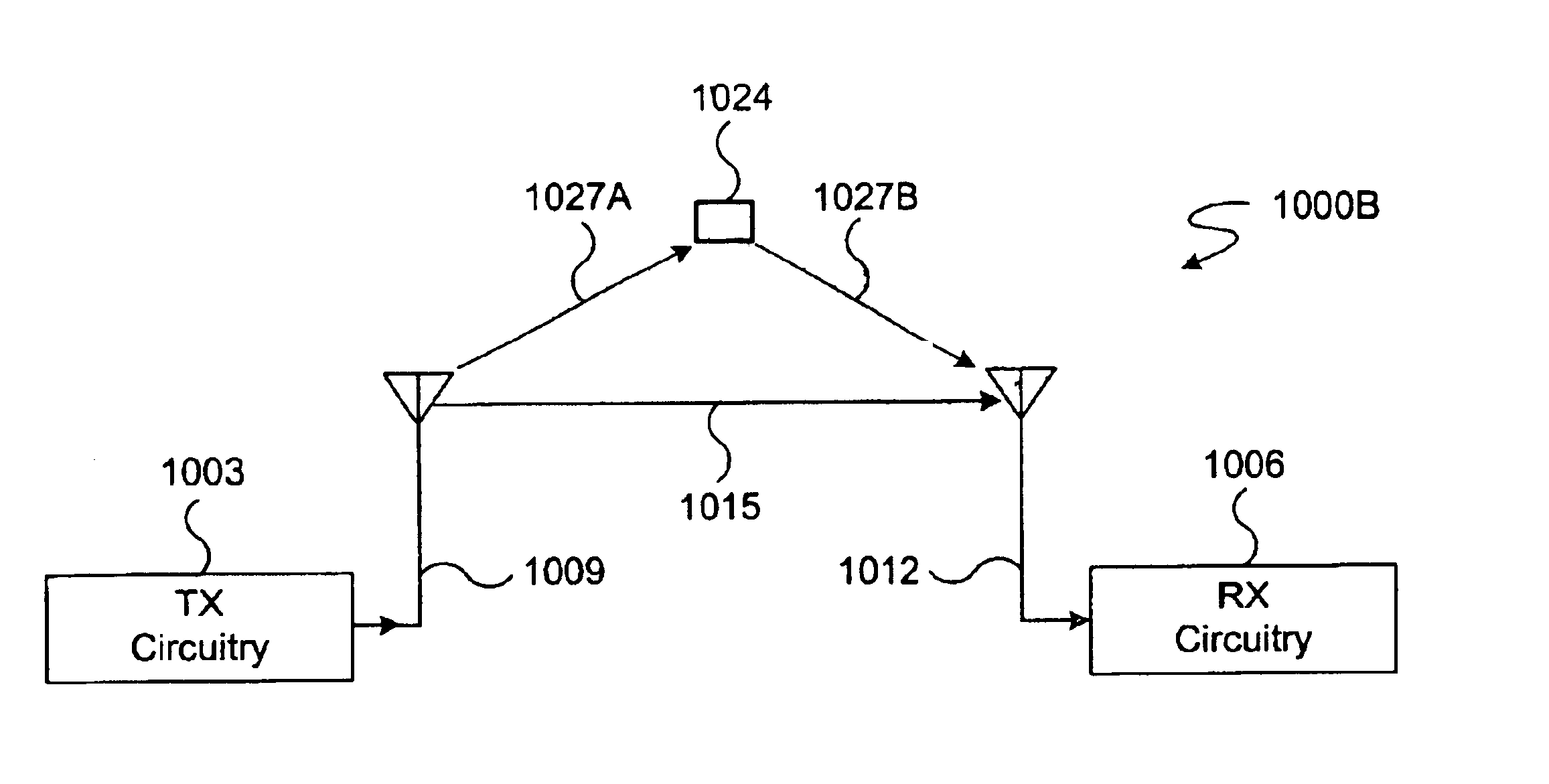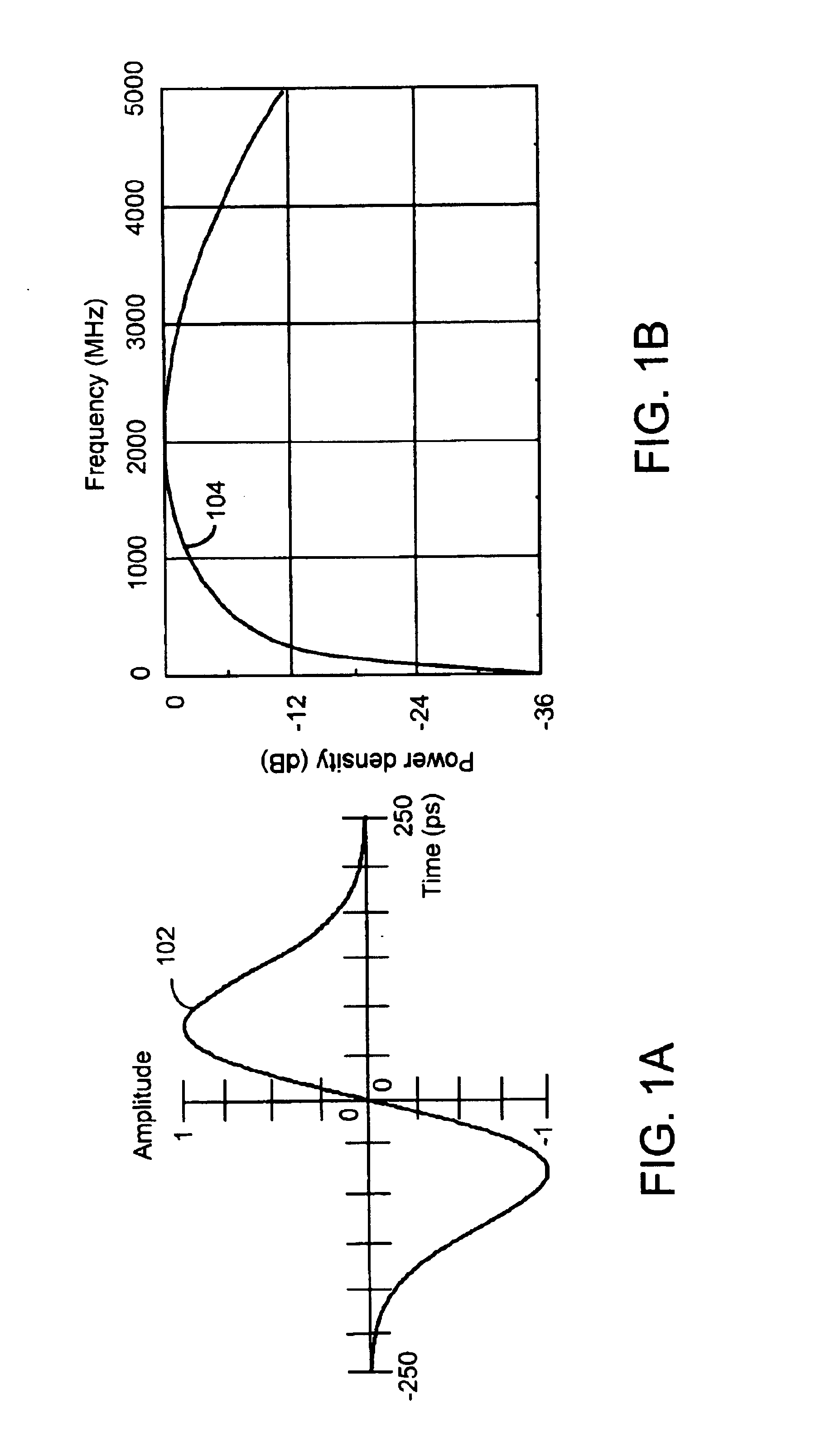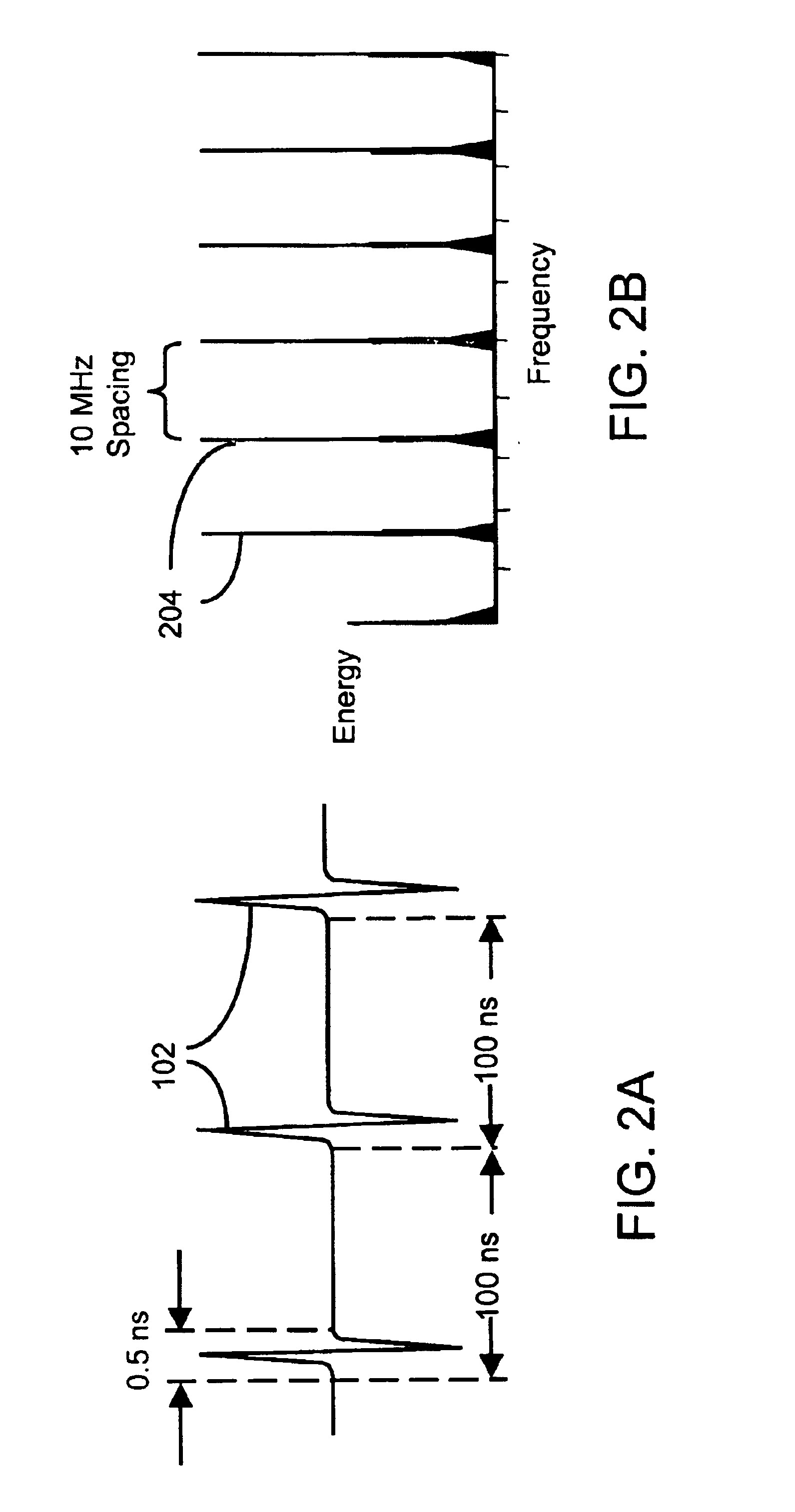Direct-path-signal detection apparatus and associated methods
a detection apparatus and direct path technology, applied in the field of communication, ranging and positioning systems, can solve the problems of inability to provide reliable ranging and positioning information, gps systems rely on expensive satellites orbiting the earth, and current positioning and ranging techniques suffer from undesirable characteristics
- Summary
- Abstract
- Description
- Claims
- Application Information
AI Technical Summary
Benefits of technology
Problems solved by technology
Method used
Image
Examples
Embodiment Construction
[0061]Recent advances in communications technology have enabled an emerging, revolutionary ultra wideband technology (UWB) called impulse radio communications systems (hereinafter called impulse radio). To better understand the benefits of impulse radio to the present invention, the following review of impulse radio follows. Impulse radio was first fully described in a series of patents, including U.S. Pat. No. 4,641,317 (issued Feb. 3, 1987), U.S. Pat. No. 4,813,057 (issued Mar. 14, 1989), 4,979,186 (issued Dec. 18, 1990) and U.S. Pat. No. 5,363,108 (issued Nov. 8, 1994) to Larry W. Fullerton. A second generation of impulse radio patents includes U.S. Pat. No. 5,677,927 (issued Oct. 14, 1997), U.S. Pat. No. 5,687,169 (issued Nov. 11, 1997) and co-pending application Ser. No. 08 / 761,602 (filed Dec. 6, 1996) to Fullerton et al.
[0062]Uses of impulse radio systems are described in U.S. patent application Ser. No. 09 / 332,502, entitled, “System and Method for Intrusion Detection using a ...
PUM
 Login to View More
Login to View More Abstract
Description
Claims
Application Information
 Login to View More
Login to View More - R&D
- Intellectual Property
- Life Sciences
- Materials
- Tech Scout
- Unparalleled Data Quality
- Higher Quality Content
- 60% Fewer Hallucinations
Browse by: Latest US Patents, China's latest patents, Technical Efficacy Thesaurus, Application Domain, Technology Topic, Popular Technical Reports.
© 2025 PatSnap. All rights reserved.Legal|Privacy policy|Modern Slavery Act Transparency Statement|Sitemap|About US| Contact US: help@patsnap.com



